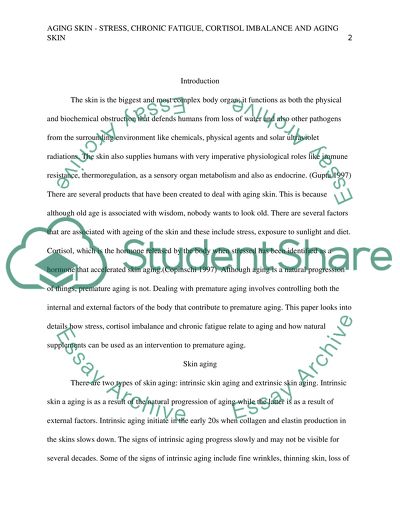Cite this document
(“Aging skin - stress,chronic fatigue,cortisol imbalance and aging skin Research Paper”, n.d.)
Aging skin - stress,chronic fatigue,cortisol imbalance and aging skin Research Paper. Retrieved from https://studentshare.org/health-sciences-medicine/1496578-aging-skin-stresschronic-fatiguecortisol-imbalance-and-aging-skin
Aging skin - stress,chronic fatigue,cortisol imbalance and aging skin Research Paper. Retrieved from https://studentshare.org/health-sciences-medicine/1496578-aging-skin-stresschronic-fatiguecortisol-imbalance-and-aging-skin
(Aging Skin - stress,chronic fatigue,cortisol Imbalance and Aging Skin Research Paper)
Aging Skin - stress,chronic fatigue,cortisol Imbalance and Aging Skin Research Paper. https://studentshare.org/health-sciences-medicine/1496578-aging-skin-stresschronic-fatiguecortisol-imbalance-and-aging-skin.
Aging Skin - stress,chronic fatigue,cortisol Imbalance and Aging Skin Research Paper. https://studentshare.org/health-sciences-medicine/1496578-aging-skin-stresschronic-fatiguecortisol-imbalance-and-aging-skin.
“Aging Skin - stress,chronic fatigue,cortisol Imbalance and Aging Skin Research Paper”, n.d. https://studentshare.org/health-sciences-medicine/1496578-aging-skin-stresschronic-fatiguecortisol-imbalance-and-aging-skin.


